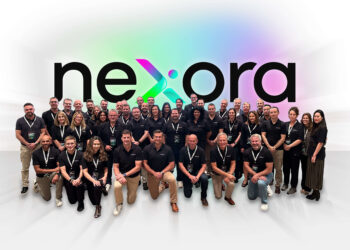The world’s largest IT solutions provider, CDW, has submitted its decarbonisation goals to the Science Based Targets initiative (SBTi), as it vowed to use its “strong voice” to spur collective action.
The $21bn-revenue powerhouse last week formally submitted three near-term goals to the SBTi, which is a collaboration between global bodies such as the United Nations and the CDP.
These are to reduce both its scope 1 and 2 emissions by 42% and scope 3 emissions by 25% by 2030 (all from a 2022 base year).
It hopes they will be approved this summer.
The news comes after channel partner leaders last week discussed the industry’s sustainable transformation at the Oxygen 250 dinner, with not all attendees agreeing things are heading in the right direction.
As of January 2024, 150 channel partners had near-term SBTi targets, according to analyst Canalys.
Talking to IT Channel Oxygen, Jon Steggles, ESG Strategic Lead at CDW UK, stressed that CDW’s sheer size means it faces “exponentially greater challenges in achieving absolute emission reductions than others in the technology industry”, however.
He also opened up on the decarbonisation progress of the UK&I business, which – separately from the global efforts – harbours a more expansive 2040 net zero goal.
UK decarbonisation dash
In the UK, CDW has moved to 100% renewable energy across its single-tenanted premises and installed 10kWh and 55kWh solar panel arrays at its Rugby distribution centre and Peterborough service operation centre, respectively.
Having already switched 59% of its UK fleet to hybrid EVs, the remaining 41% will be transitioned this month, meanwhile, Steggles said.
“The reason we can’t go full zero-emission or EV is that those engineers are traversing more than 300 miles a day, and we can’t strand them. The technology needs to catch up,” he explained.

On advice from the SBTi itself, CDW UK&I opted not to submit separate SBTi goals from the global organisation.
Its 2040 carbon net zero target was instead driven by new government rules (PPN 06/21) forcing public sector suppliers bidding for large contracts to have a net zero plan. These have been in place since 2020.
This means its UK net zero goal only encompasses five of the 15 Scope 3 categories (namely ‘upstream transportation and distribution’, ‘waste generated in operations’, ‘business travel’, ‘employee commuting’ and ‘downstream transportation and distribution’). It does not include ‘sold products’ (which is often where a big chunk of indirect emissions lie).
Achieving headway on upstream and downstream emissions requires collective industry action, Steggles said.
“We have an expectation that 90% of the carriers will be using zero-emission or EVs by 2040. Can we drive that? I think at an industry level we have a very strong voice,” Steggles said.
“We can influence. I think there’s an opportunity for radical collaboration across the industry to build demand for those organisations delivering line haul to move to a form of EV.”
Going global
The efforts of the UK business – which ranked fifth in Oxygen 250 based on its £1.3bn calendar 2022 net revenues – will feed into CDW’s global SBTi progress.
Steggles took up his post in April 2023, having spent the previous 18-24 months presenting UK nuance to the US ESG global team to ensure the UK business had a voice in the global strategy.
“I provide the link between the UK and international business and global thinking. I spend on average three or four hours a week discussing strategy with my US counterparts,” he said.

IT solutions providers in the UK and parts of Europe have generally been quicker off the mark on decarbonisation and SBTi than those based in the US, with Softcat and Computacenter, for instance, having both their near-term and 2040 carbon net zero targets approved by SBTi in 2022 and 2023, respectively. Atea in the Nordics was another early mover.
Looking at CDW’s US-based peers, SHI and WWT have both committed to submitting near-term and net zero SBTi goals fairly recently, while Insight appears to be taking more of a wait-and-see approach.
As of January 2024, 150 resellers, MSPs, SIs and distributors globally have near-term SBTi targets, Canalys said. Of these, around half have had their targets validated.
“Vendors need to realise that a significant portion of their environmental impact is collectively shared with their partner ecosystem, and only through engaging with this community can vendors achieve their corporate sustainability objectives,” Canalys’ Vice President, Channels, Alex Smith, said at the time the research was publicised.
“Fortunately, many partners are already making significant strides in this space.”
CDW threw its weight behind SBTi “because we see this as the current ‘gold standard’. “We must measure, manage, and drive change, while continuing to meet the expectations of the communities we serve”, Steggles said.
“OEM partners, customers and suppliers are starting to suggest SBTi as the minimum bar,” he added.
“We risked being exposed because an organisation of our size can’t be seen to be prevaricating for too long, and more importantly to sustain the planet change is needed now.”
CDW is also making swift progress outside the framework of SBTi, Steggles claimed.
The UK business in December increased its overall score with sustainable rating agency EcoVadis by 15% year on year, [with the current score demonstrating a 42% improvement in two years], returning a Silver Medal certification and gaining Leader status for GHG Management, he said, for instance.
The UK arm has also installed a 50,000-gallon renewable rainwater harvesting system, introduced 100% packaging and waste recycling across its operations, and removed single-use plastic cups at all its sites, Steggles stressed.
“The UK business is moving at pace,” he said.
Doug Woodburn is editor of IT Channel Oxygen


















